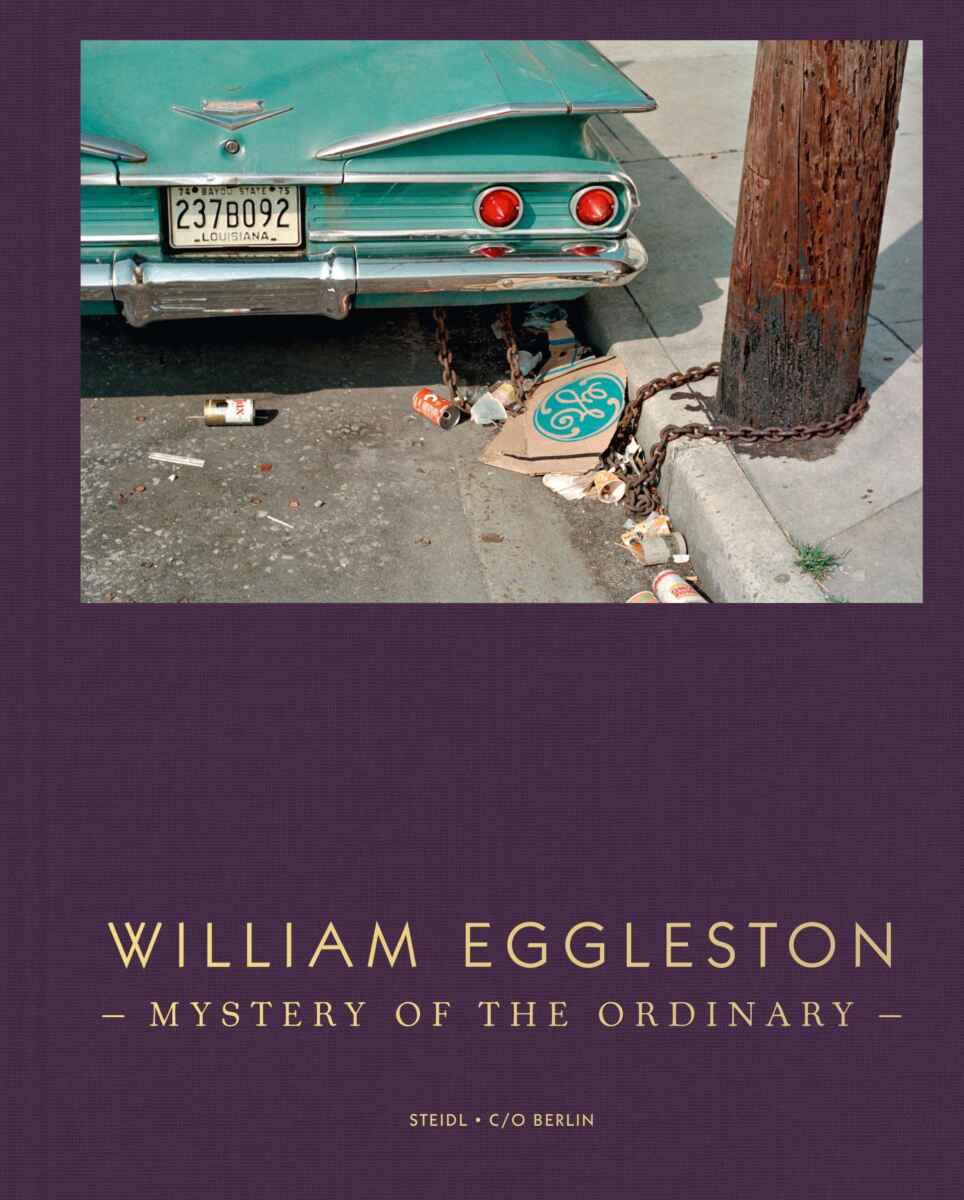
Born in Memphis (Tennessee) in 1939, William Eggleston innovated, revolutionized photography. He broke with black and white images, and he imbued banality with the uncanny and mysterious: particularly because color is integral to human perception.
Although the first universal color slide film came onto the market in 1935, black and white images continued to dominate both art photography and photojournalism. Color photography was almost exclusively reserved for the world of advertising. Even in the 1980s, it was still considered commercial, vulgar and unartistic.
In 1957, William Eggleston started with black and white photography. In 1965, he switched to color after seeing such photographs by William Christenberry.
William Eggleston’s was initially inspired by the Swiss photographer and documentary filmmaker Robert Frank (1924-2019), the American photographer Walker Evans (check our article Walker Evans: The Hungry Eye) as well as by the French photographer Henri Cartier-Bresson (1908-2004; Cartier-Bresson books at Amazon USA) and his groundbreaking, 1952 publication The Decisive Moment; William Eggleston himself spent most of the time exploring an area, taking up the camera just a short moment to make a shot.
From January 28 until May 4, 2023 you can disover many Eggleston photographs at C/O Berlin in the Amerika Haus in the William Eggleston — Mystery of the Ordinary exhibition (2023 catalogue by Steidl Books: Amazon.com, Amazon.co.uk, Amazon.fr, Amazon.de). The show is organized in cooperation with Fundación MAPFRE, which will present it subsequently in Barcelona and Madrid.
Mystery of the Ordinary captures the full scope of Eggleston’s evolution and legacy: from the early black-and-white photographs of the late 1950s, in which we witness his discovery and exploration of themes and unconventional croppings, to some of his most iconic color images.
In addition to presenting famous photo series’ such as Los Alamos, the exhibition contains works that have never been seen before, including pictures from the series The Outlands and images taken in Berlin between 1981 and 1988. The former U.S. Information Center in the Amerika Haus, where C/O Berlin is located today, was an important meeting point for William Eggleston. As part of the Werkstatt für Photographie, he was engaged in lively exchanges with resident photographers.
William Eggleston’s innovation goes far beyond color. He created pictures that continuously challenge the everyday. Instead of focusing on the extraordinary, the seemingly noteworthy, the beauty, he shows everyday life.
The beauty and mystery of the commonplace spans from the content of his fridge to a boring building façade. William Eggleston does not just document details of the life, the surroundings of and the products used by the common people in the suburbs of the American South. By not showing the usual, but something new, previously considered unworthy to be documented, he broke new ground, offered a fresh look. His work was a formal and analytical provocation. He managed to unmask the American dream, the consumers paradise. At the same time, notably through the rarely seen use of color, the banality of everday life became mysterious. And more than once, you need to have a closer look at the photographs. They may not document what you first imagined.
William Eggleston’s first solo exhibition took place in 1976. Curated by John Szarkowski, the Museum of Modern Art in New York showcased for the first time color photography. The exhibition and its accompanying catalogue, William Eggleston’s Guide, have come to be widely recognized as a pivotal moment in the medium’s acceptance into the art historical canon. However, in 1976, the New York Times critic wrote that it was the most hated show of the year.
William Eggleston influenced subsequent generations of photographers. Together with Saul Leiter, Evelyn Hofer and Stephen Shore, he was one of the first photographers to recognize the distinctive power of color and its unique capacity to create pictures that continuously challenge the everyday.
According to one of his sons, William Eggleston has stopped photographing, and he does not comment his work. Despite his role as a pioneer of color photography, he did not hunt for glory, he just did what he had to do.
Edited by Felix Hoffmann: William Eggleston — Mystery of the Ordinary. Steidl Books, C/O Berlin, hardback, 2023, 208 pages, 24 x 30 cm. Order the English edition from Amazon.com, Amazon.co.uk, Amazon.fr, Amazon.de.
More books about William Eggleston at Amazon USA, Amazon UK, Amazon Deutschland, Amazon France.
Related articles: our 2002 article in English about the William Eggleston exhibition at the Fondation Cartier pour l’art contemporain Paris; biography in German of Henri Cartier-Bresson; French articles about Henri Cartier-Bresson; English article Walker Evans: The Hungry Eye;

For a better reading, quotations and partial quotations in this book / catalogue / exhibition review are not put between quotation marks.
Exhibition / Catalogue review added on March 16, 2023 at 16:48 German time.